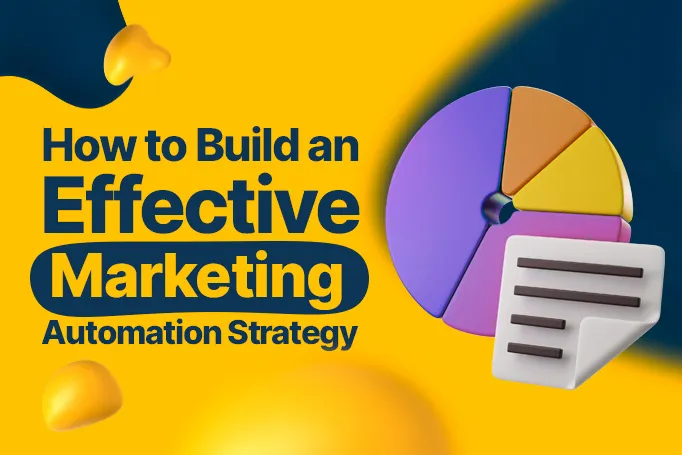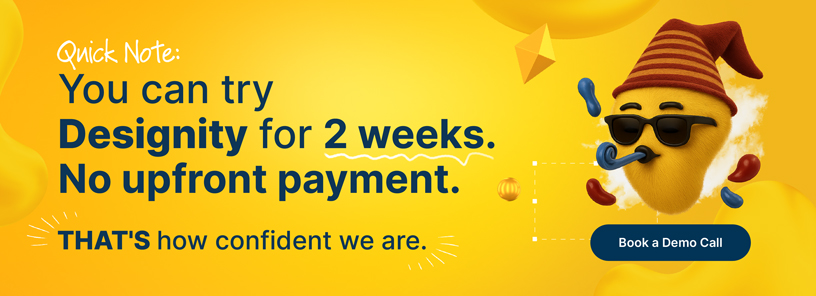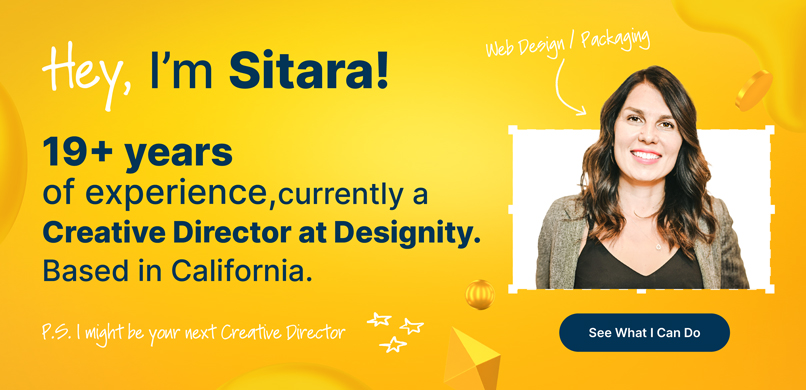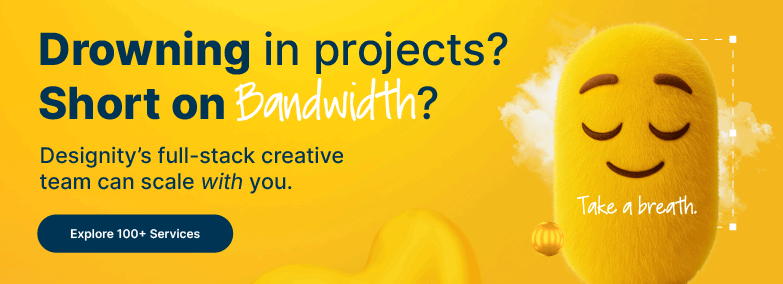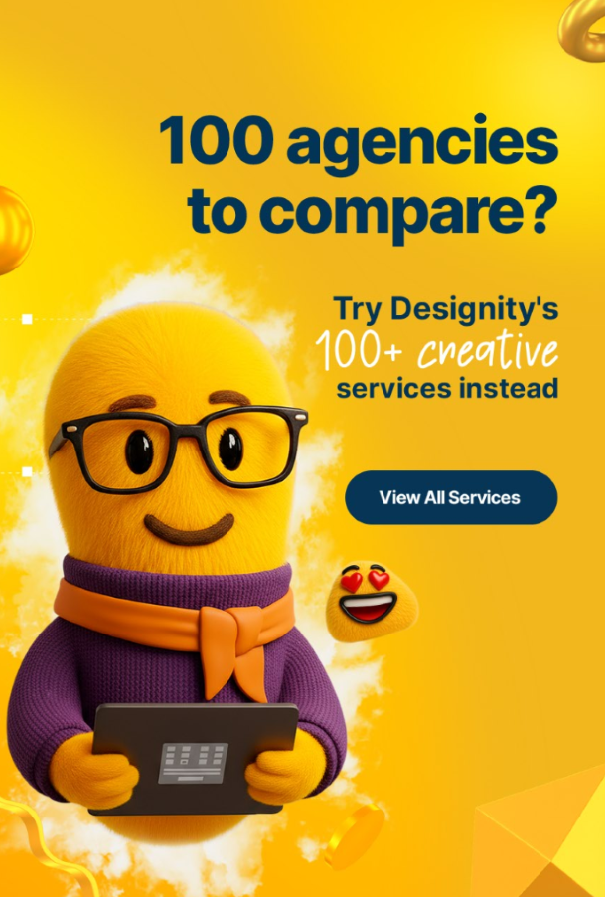Digital marketing is hard work, don’t let anyone tell you any different.
Because of that reason, brands from all over have turned to marketing automation tools to streamline their workflow, save them time, and make their campaigns run more efficiently.
Unfortunately, it’s not enough to just automate some emails and call it a day. Even the best and most up-to-date automating software can’t help you succeed if your campaign lacks a solid strategy.
So, how do you create an effective marketing automation strategy?
If you’ve been pulling out your hair asking yourself that same question, then we’ve got you covered! Today’s blog is going over the key components of an effective marketing automation strategy to help you set your campaign up for success!
What is a Marketing Automation Strategy?
A marketing automation strategy is a comprehensive approach that brands use to get the most out of their marketing automation tools and technologies.
The right strategy can help your brand streamline your workflow, increase your operation’s efficiency, and improve the effectiveness of your campaign to better reach your goals!
And since getting the right strategy is so (so,so,so) important, we’ve outlined the things you’ll need to know to build the most effective strategy for your automated campaign.
Step 1. Build a Solid Foundation

Before you begin your campaign, you’re going to want a solid foundation to build on! Setting yourself up properly is the best way to ensure the success of your campaign.
Here are the steps you’ll need to take:
Define Your Goals
Setting clear and measurable goals is the first step in any marketing strategy, automated or otherwise.
So, what are your goals? What do you want this campaign to achieve?
Whether it’s increasing lead conversion rates, reducing customer churn, or improving engagement, defining these goals before you start provides direction, purpose, and motivation for your efforts and your team.
Identify Your Target Audience
Once you and your team understand your goals, the next step is to understand who it is you’re wanting to win over.
Understanding your target audience is crucial for effective automation. Knowing your audience’s pain points, what they’re looking for, and what messaging best resonates with them will determine not only what kind of content you create for them, but the channels you’ll use to distribute that content as well.
To get a good grasp on your audience’s needs, we find it very helpful to build out some detailed user personas to really get in your customer’s shoes and tailor your campaign in a way that addresses their pain points and needs.
If you need some guidance on how best to create user personas, we’ve got a recent blog article that could help you out with that. Go ahead and give Kickstart Your ABM Campaign Part 1: User Personas a read.
We’ll wait.
Get Yourself the Best Software
Selecting the right marketing automation software can make a big difference in your results. You want not only the most accurate data and software but data and software that aligns with your strategy and goals as well.
To narrow down the software that works best for you, first determine the features and ease of use you’ll need, as well as integration abilities that work best for your existing workflow and team. Then, take a good, hard look at your budget and see what fits you best.
If you’re looking for some inspiration, here are some popular marketing automation platforms to choose from:
- HubSpot Marketing Hub — HubSpot Marketing Hub is an all-in-one inbound marketing platform that offers email marketing, social media management, CRM, lead generation, and analytics. It's known for its user-friendly interface and comprehensive marketing tools.
- Marketo — Marketo, part of Adobe Experience Cloud, is a robust marketing automation platform that provides lead management, email marketing, analytics, and personalization. It's favored by larger enterprises for its scalability.
- ActiveCampaign — ActiveCampaign is an email marketing and marketing automation platform that includes features like CRM, lead scoring, and behavior tracking. It's known for its automation capabilities and user-friendly interface.
- Pardot (by Salesforce) — Pardot is a B2B marketing automation platform that offers lead nurturing, email marketing, and ROI reporting. It's popular among Salesforce users for its integration capabilities.
- Mailchimp — Mailchimp is a user-friendly email marketing and automation platform. It's known for its ease of use and offers features like email marketing, audience segmentation, and basic CRM capabilities.
- Eloqua (Oracle) — Eloqua is an enterprise-level marketing automation platform offered by Oracle. It includes lead scoring, email marketing, campaign management, and advanced analytics.
- Infusionsoft by Keap — Infusionsoft is designed for small businesses and provides CRM, email marketing, e-commerce, and automation features to help businesses grow and manage customer relationships.
- Drip — Drip is an e-commerce-focused marketing automation platform that offers advanced email marketing, segmentation, and personalized marketing automation workflows.
- SharpSpring — SharpSpring is a marketing automation platform that provides lead scoring, email marketing, behavior tracking, and CRM. It's known for its affordability and user-friendly features.
- Ontraport — Ontraport is a comprehensive automation platform that combines marketing, sales, and business management tools. It offers email marketing, CRM, and workflow automation.
- Mautic — Mautic is an open-source marketing automation platform with features like email marketing, campaign tracking, and lead management. It's known for its flexibility and cost-effectiveness.
- Autopilot — Autopilot is a marketing automation and customer journey platform that enables businesses to automate marketing campaigns and track customer interactions.
- ActiveDEMAND — ActiveDEMAND is a marketing automation platform that offers email marketing, social media automation, and lead tracking to optimize marketing efforts.
- ClickDimensions (for Microsoft Dynamics 365) — ClickDimensions is a marketing automation solution for businesses using Microsoft Dynamics 365. It offers email marketing, lead scoring, and web tracking.
Step 2. Create Your Content
Your foundation is laid and now it’s time to get those creative juices flowing and start producing some valuable and engaging content.
The right content can make or break your campaign so pay close attention to these steps to make sure your content is valuable, timely, and aligned with your audience’s needs!
Customer Journey Mapping
Your customers typically go through a journey before they decide to purchase. It’s not always linear, but the user journey often goes like this:
- Awareness — At this stage, your potential customers have just been introduced to your brand and your products or services. They have a problem and they’re searching for solutions, so content for these customers should focus on providing information and raising brand awareness.
- Consideration — In the consideration stage, your prospects are weighing their options. They might be researching and comparing your products or services against some of your competitors to see which would be best for them. Content here should highlight your unique value and address your customer’s specific pain points.
- Conversion — This is it. The decision-making stage, where your potential customer converts from a prospect to a sale (or whatever other desired action you wanted them to take). To help them along, content for this stage should provide product details, pricing, and a crystal-clear CTA.
- Retention — Don’t forget that the journey doesn’t end with a conversion. For an overall positive customer experience, you still need content that keeps your customers engaged to encourage repeat business!
- Advocacy — If you provide your customers with a valuable product, great customer service, and a positive customer experience, you can convince that customer to become a brand advocate! Content here should encourage your customer to leave positive reviews, refer their friends, or send some user-generated content via social media posts or any other method to boost your brand’s cred.
Because your customers have different needs at each touchpoint of their journey, mapping this out helps you better understand different pain points and opportunities for engagement that your content will have to tailor to.
Personalize Your Content
Personalization can make all the difference in your marketing efforts!
Tailor your content not only to different points of the user journey but to individual preferences and behaviors to enhance engagement and boost your conversion rates.
Going the extra mile shows your customers that you truly understand their unique needs so that you can build the brand loyalty and long-lasting relationship you want!
An Omni Channel Approach
An omni channel approach ensures that your content and messaging are consistent and integrated across various channels to find your potential customers wherever it is they might be.
The channels you use can vary, but some popular approaches are:
- Email Marketing — This is where you craft personalized messages to keep your subscribers informed and engaged.
- Social Media — Engage with your audience using everything from witty tweets to inspiring visuals.
- Website — Think of your website as your online HQ. It should be the central hub where all your channels converge.
- Mobile Apps — If you've got an app, it should be an extension of your brand's persona, just like your website.
- Physical Stores — If you have physical locations, make sure the in-store experience syncs with your digital one.
- SMS/Text Messaging — Snappy texts can be a great way to reach your audience on the go.
- Chatbots and Live Chat — These digital helpers offer real-time support and conversation right on your website.
- Content Marketing — Blog posts, articles, and other content should be in your brand's voice and offer value to your potential customers.
- Paid Advertising — Your ad campaigns should spread the word about your brand, whether they're on Google Ads or Facebook Ads.
- Customer Service — Your support interactions should make customers feel valued and supported.
- Social Messaging Apps — Engage with your audience on their favorite messaging apps, making support feel like a chat with a friend.
- Video Marketing — Your YouTube videos should be an extension of your brand's personality.
- Marketplaces — Listings on platforms like Amazon.
- Affiliate Marketing — Partners and affiliates who can be your brand's enthusiastic cheerleaders.
- Events and Webinars — Whether virtual or physical, these should be like an exclusive VIP event hosted by your brand.
Remember, with an omni channel approach, you don’t just have several teams using these strategies, your teams are using them together, staying in close communication, and on the same page.
Step 3. Automate Your Workflow

Now it’s time to get your content out into the world!
Marketing automation makes this process much more efficient and streamlined to help you hit your goals faster.
Here’s how to best set up your workflow for maximum results!
Segmentation
Before you start sending out your content to your target audience, you’ll first need to make sure that the right content is getting to the right customers and at the right time.
Segmenting your lists is a crucial part of your strategy. Divide up the folks on your lists based on aspects like demographics, point in the user journey, source of visit, and more to be sure that your content is targeted efficiently and delivers the intended message.
Timing is Everything
And remember, you’re not just sending emails or texts at random. Timing is an extremely important aspect of an automated campaign.
Analyze your audience behavior data, check time zones, and keep in mind seasonal variations and behavior triggers to know when the best time to reach out to your potential customer could be.
Whether it’s seasonal promotions, abandoned cart emails, or knowing right when mid-morning “coffee and iPhone” break is for a segment of your audience, nailing your timing makes sure that your communication and content are more relevant and hit the mark.
Best Lead Capture Strategies
Effective lead capture strategies are a must if you want to expand your customer base and grow your businesses.
There are several different ways to generate leads and you might have a favorite already!
The following are some of ours:
Content Offers
Who can resist free stuff?
Content offers are little treats for your audience. They work especially well on landing pages, giving your prospects a chance to trade their email address or other contact information for a valuable eBook, whitepaper, webinar invite, or anything else that gets them into your sales funnel.
Contests and Giveaways
Everyone likes a little competition.
Contests and giveaways are a surefire way to generate a little buzz and excitement, especially through your social media platforms. Encourage your participant to provide their email address in exchange for a chance to win a prize.
Surveys and Quizzes
These types of interactive content are not only a clever way of engaging your audience, but of collecting contact information as well!
By offering valuable insight or personalized results, you can coax your prospects into sharing their contact info and entering your sales funnel.
Referral Programs
Referral programs are a great way to turn your existing customers into brand advocates.
Encourage your current subscribers to refer their friends and coworkers in exchange for some sweet rewards or discounts.
Demos
Demos are an excellent way to showcase your product’s value and get some leads in the process.
Offering a sneak peek or a trial version (depending on what your product or service is), can tempt some potential customers into sharing information with you.
Choose the Right Automation Tools
You’ll want to choose the best tools to use (more on that in tomorrow’s blog, so stay tuned!) so that your campaign is at its most effective.
We’ve already gone over a list of our favorite marketing automation software, so here is a list of some of our favorite email automation and CRM systems to choose from:
Email Automation Platforms
- Mailchimp — Mailchimp is a user-friendly platform known for its marketing automation features, including email campaigns, audience segmentation, and reporting.
- HubSpot — HubSpot offers a comprehensive marketing automation suite with email marketing, lead nurturing, and CRM integration, making it a popular choice for businesses of all sizes.
- ActiveCampaign — ActiveCampaign is a powerful automation tool that combines email marketing, automation, and CRM features to create highly personalized and targeted campaigns.
- Constant Contact — Constant Contact is a user-friendly platform that offers email marketing, automation, and event management to help businesses grow their online presence.
- GetResponse — GetResponse is an all-in-one marketing platform with email marketing, automation, and webinars, making it a versatile option for businesses looking to expand their marketing efforts.
CRM Systems
- Salesforce — Salesforce is one of the most widely used CRM platforms, offering a comprehensive suite of tools for sales, marketing, and customer support. It's highly customizable and suitable for businesses of all sizes.
- HubSpot CRM — HubSpot provides a user-friendly CRM with marketing and sales automation features. It's a great choice for businesses looking to align their marketing and sales efforts.
- Zoho CRM — Zoho offers a versatile CRM platform with a range of features, including automation, analytics, and integrations. It's a cost-effective solution for businesses seeking a customizable CRM.
- Pipedrive — Pipedrive is a sales-focused CRM designed to help teams manage leads and deals efficiently. It offers automation, reporting, and pipeline management features.
- Insightly — Insightly is a CRM designed for small and mid-sized businesses. It provides tools for contact and project management, making it a suitable choice for businesses with complex workflows.
Step 4. Nurture Your Leads

Now that you’ve captured the attention of some potential leads, it’s time to focus on nurturing those relationships to guide them further down your sales funnel and closer to conversion.
Lead Nurturing Workflows
Lead nurturing involves guiding your leads through the sales funnel with relevant content and communications and workflows are more efficient ways to do that.
Your lead nurturing workflow involves sending sequences of messages and actions that move your leads closer to a conversion.
They’re highly customizable and can easily be tailored to the specific pain points, needs, and behaviors of your leads to help you out with segmentation, content delivery, lead scoring, and more.
Sequencing Content
Effective content sequencing makes sure that your leads are nurtured by getting the right information at exactly the right time.
Plan out your content in a way that aligns with the lead’s position in the sales funnel to keep them moving along until they convert!
Step 5. Analytics and Reporting
Analytics measure your overall campaign performance and are the roadmap that tells how effective your strategies are.
Measuring the performance of your campaign gives you valuable insight and helps you know what aspects need tweaking in order to keep generating leads and increasing conversions.
Your list of KPIs (key performance indicators) may vary based on your goals, but here is a list of popular KPIs to keep track of.
- Conversion Rate — The percentage of recipients who took a desired action.
- Open Rate — The ratio of opened emails to the total sent.
- Click-Through Rate (CTR) — The ratio of clicks on links in your emails to the total number of links.
- Bounce Rate — The percentage of emails that couldn't be delivered to the recipient's inbox.
- Unsubscribe Rate — The rate at which people opt out of your email list.
- Lead Generation Rate — The number of leads generated through the campaign.
- Return on Investment (ROI) — The financial return on the campaign investment.
- Customer Acquisition Cost (CAC) — The cost required to acquire a new customer.
Understanding these metrics and their implications will help you refine your marketing automation strategy, optimize your content sequencing, and fine-tune lead nurturing workflows for the best results.
Data-driven decision-making is the key to your campaign’s ongoing success!
Step 6. Sales and Marketing Alignment
Aligning your sales and marketing teams is a crucial aspect of an effective marketing automation strategy that is not to be overlooked!
These two departments have a history of operating in silos with little to no interaction, but it’s time to change that! Marketing automation breaks the barriers and fosters communication and a more collaborative environment.
The customer journey is seldom a point A to point B kind of thing and involves multiple touchpoints across your team’s sales and marketing efforts. When your team is in constant communication, however, your marketing team can nurture leads until they’re qualified to hand off to sales to make sure that no leads fall through the cracks.
Working together lets sales and marketing share more valuable insights about your leads and provides the sales team with the information they need to have more informed and productive conversations that have a better chance of leading to sales.
<div class="c-blog_comp-cta cc-component-1"><div class="c-blog_comp-cta-left"><div class="c-blog_comp-cta-left-wrap"><img src="https://global-uploads.webflow.com/61cdf3c5e0b8155f19e0105b/6369722e59155470b6840033_Potential-clients.png" loading="lazy" alt="" class="c-blog_comp-cta-left-img"></div></div><div class="c-blog_comp-cta-right"><div class="c-blog_comp-content"><div class="c-text-wrapper cc-mb-32"><div class="c-title-4 cc-bold"><strong>Want to save money without sacrificing the quality?</strong></div></div><div class="c-text-wrapper"><div class="c-text-2">Say goodbye to traditional, expensive agencies and unreliable marketplaces. Say hello to Designity.<br></div></div></div><div class="c-blog_comp-wrapper"><a href="/pricing" target="_blank" class="c-button cc-primary cc-inverted w-button"><strong>Get Your 2-Week Trial</strong></a></div></div></div>
Want to Make the Process Even Easier?
And that’s all it takes to have an effective marketing automation strategy!
No, really. Just all of that.
If you’re skimming through and thinking “easier said than done, Designity Blog,” you’re right.
Even though an automated campaign is designed to take over your most tedious and time-consuming tasks, it still takes a lot of work to put together.
You’ve got to plan your strategy just so, have the right content that is not only timely but engaging and resonates with your target audience no matter where they are in their journey.
It’s quite a bit of work, so if you’re looking for a cost-effective partner to help you streamline that process, then we’ve got a solution for you!
Designity is made up of the top 3% of US-based creative talent, including all the professionals your campaign will need to see success. Copywriters, designers, web developers, digital marketers, you name it, you can find the cream of the crop here at Designity.
And with a Creative Director to manage and source the right talent, build out your timeline, and manage each and every one of your projects, you’ll soon have a winning strategy and the perfect content to back it up.
Have a look at our portfolio and see what Designity has been able to do for brands just like yours and when you’re ready, book your demo call today.
We feel like this may just be the start of a beautiful friendship.
